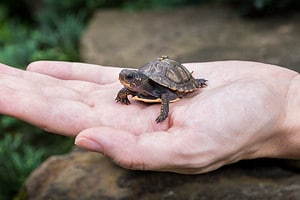Have you recently seen an adorable video of a baby tortoise eating a strawberry or a piece of lettuce? These amazing animals are large, unique, and found throughout the world. While tortoises range in size, more are larger than other freshwater turtles. But can these gentle giants swim? Follow along to find out and as a bonus, enjoy 22 tortoise facts.
1. Tortoises Cannot Swim
Starting our list of fun facts, no, tortoises cannot swim. Sadly, tortoises are poor swimmers. They are too heavy for the water and instead can only temporarily float or swim. If you see a tortoise in the wild, don’t put them in the water! They will sink and drown.
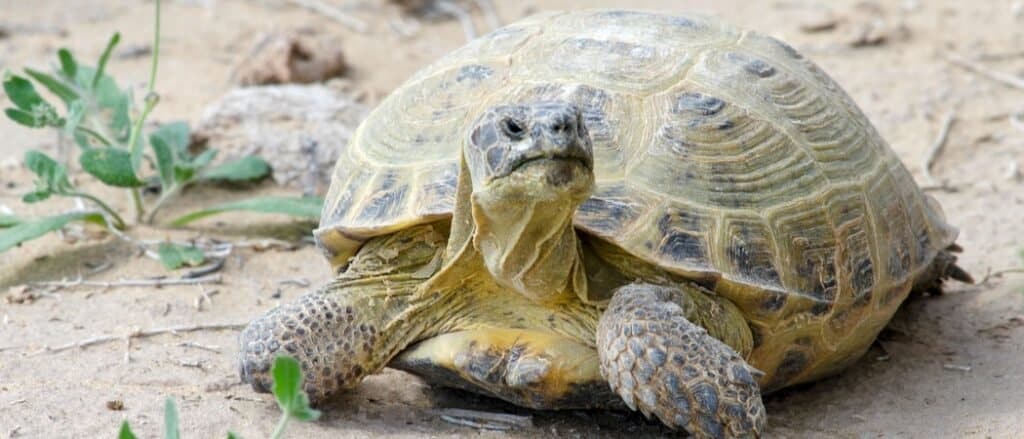
Tortoises cannot swim. They don’t have the right features for swimming.
©Kirill Skorobogatko/Shutterstock.com
2. There are Over 40 Recognized Tortoise Species
No two turtle species are perfectly alike. There are over 40 recognized tortoise species across a little more than 15 genera.
3. Tortoises Can Live For Over 100 Years
Tortoises are one of the oldest land-living species in the world. They can easily surpass over 100 years old. The Guinness World Record for the oldest living land animal was awarded to Jonathan, a Seychelles giant tortoise in 2022. Jonathan is estimated to be 190 years old, but might even be older!
4. The Fastest Tortoise in the World is Named Berty
Talking about records, while Jonathan’s 190 years is impressive, he isn’t the fastest tortoise in the world. That record goes to Bertie, a tortoise from the United Kingdom that could run about 0.92 ft/s. She’s had this record since 2014.
5. As Long as Tortoises Have Access to Drinking Water, They Can Go Without Food For up to 3 Years
These land-loving turtles don’t need a lot of food or water to eat. They can live for weeks or months without food, as long as they have water. Tortoises can be fed once a day for 5 days a week.
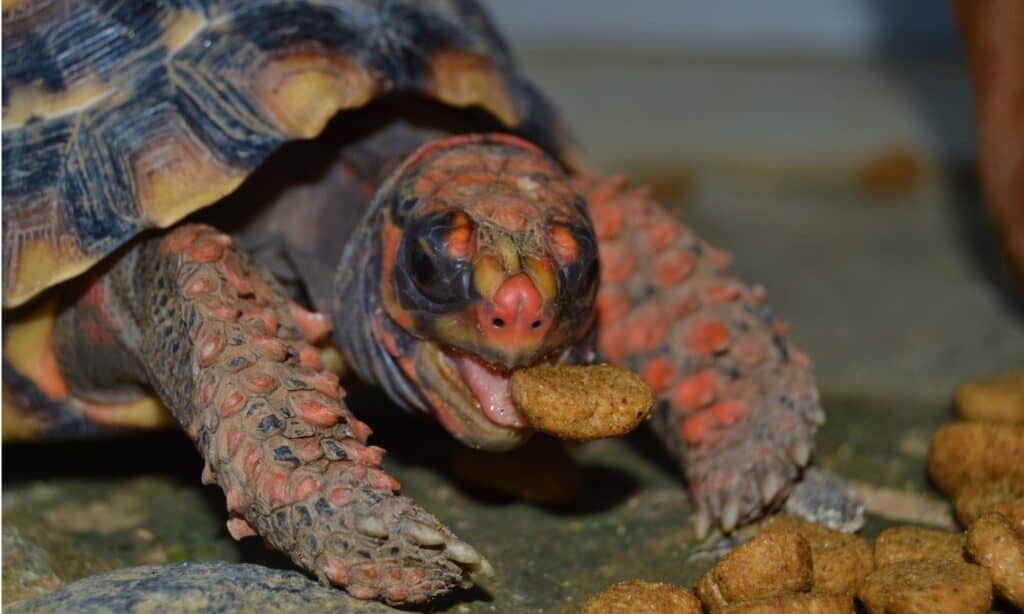
Tortoises need water but can go weeks without food.
©iStock.com/Markus Frenzel
6. Some Tortoise Species Hibernate
Not all tortoise species hibernate. Some common tortoise species that hibernate include the desert tortoise, Russian tortoise, gopher tortoise, and marginated tortoise.
7. Tortoises are Solitary Animals
Unlike other animal species, tortoises live independent and solitary lives. The only time they interact with other tortoises is during breeding. Tortoises don’t care for their hatchlings.
8. Despite being slow, Tortoises Can Travel Up to 4 Miles a Day
While tortoises aren’t very fast animals, they travel far. They can easily travel up to 4 miles a day. The distance a tortoise moves through depends on the species, size, and age. Smaller tortoises are faster than larger tortoises.
9. The Warmer the Environment, the Lighter the Shell
The warmer a region, the lighter a tortoise’s shell. Interestingly, in colder climates, tortoises have a darker shell.
10. Tortoises Fight with Ferocious Glares
Tortoise fights are interesting to watch. They aren’t overly aggressive but will protect themselves. Typically, it’s male tortoises that fight. They stare at each other before charging.
11. Tortoises Seek Calcium and Consume Old Bones
For the most part, tortoises are herbivores. However, they eat bones when low on calcium. Calcium is important as it fuels bone growth.
12. They are Attracted to Bright Colors
Compared to other reptiles, tortoises have great eyesight. They can see bright colors.
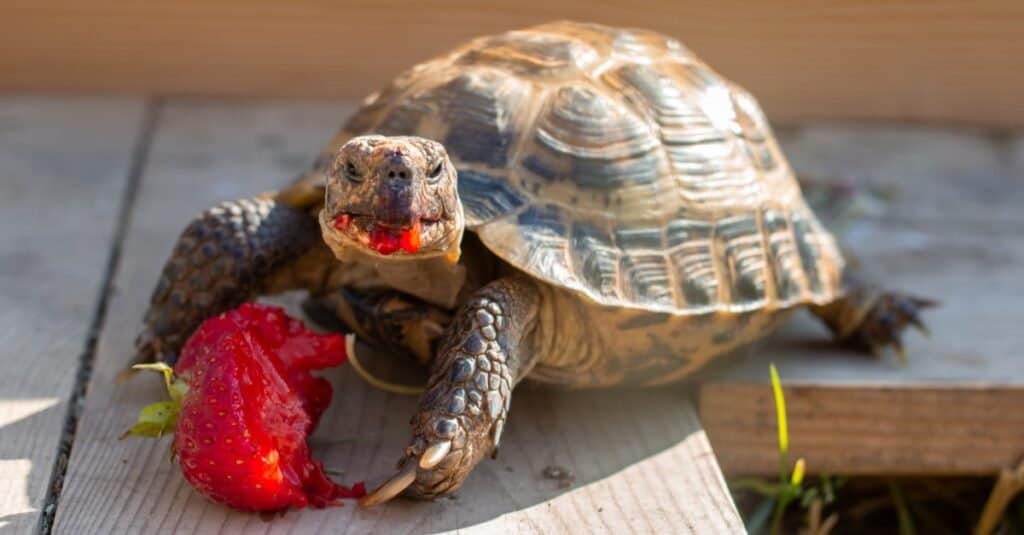
Another fun tortoise fact is that tortoises have great eyesight.
©Elena M. Tarasova/Shutterstock.com
13. Tortoises are Very Old!
Tortoises don’t just live long lives, but they’ve also been around for a long time! Evidence shows that tortoises and turtles have existed since the time of the dinosaurs. Pre-historic turtles and tortoises have existed since 250 million years ago!
14. Interestingly, Charles Darwin and Steve Irwin Cared for the Same Tortoise
are you ready for another great tortoise fact? Did you know that Charles Darwin and Steve Irwin cared for the same turtle? There are reports that Charles Darwin collected Harriet, a Galápagos tortoise, and brought it back to England. Eventually, this tortoise went to its final home in Australia, the Australia Zoo. This zoo was owned by Steve Irwin. Harriet was an impressive tortoise and lived to be about 175 to 176 years old.
15. Some Tortoises Dig and Create Large Burrowing Systems
Some tortoise species bury themselves underground and create unique burrowing systems. One tortoise can have 35 burrows alone! Typically, tortoises hibernate in these underground burrows.
16. Tortoises Can be Turtles, but Not All Turtles are Tortoises
All tortoises are turtles. Turtles are technically an order of reptiles, not a family or species. Instead, tortoises belong to the family Testudinidae.
17. It’s Hard to Tell Their Sex
You can’t tell the sex of a tortoise just by looking at them. It’s more complicated than that. The shape of the underside of the shell near the tail varies. Male tortoises have a v-shaped notch, while females have a more ‘u’ shape. This alone though isn’t enough to tell the sex of a tortoise.
18. Tortoises Can Feel When You Touch Their Shells
Tortoises are very sensitive. They can feel when you touch their shells. Their shells are filled with nerves! Did you know tortoises often feel itchy? This is very common when they shed.
19. You Can Keep a Tortoise as a Pet
Tortoises are very common pets! They are perfect for families looking for a life partner. Tortoises live a very long time and need plenty of space.
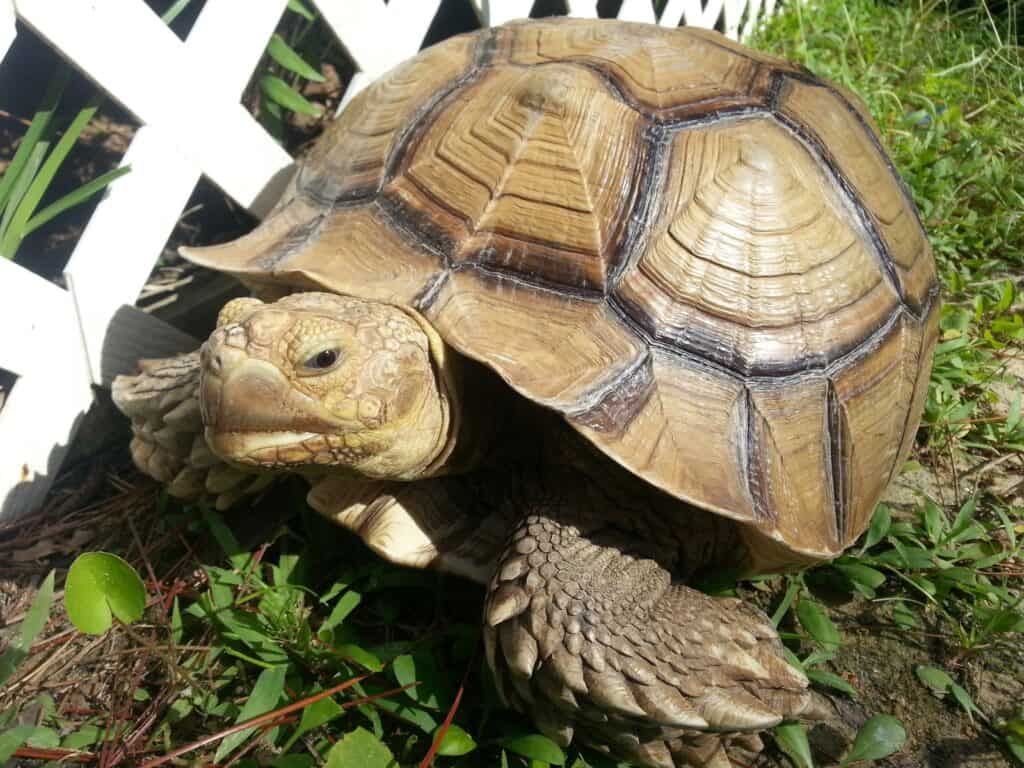
Tortoises make great pets.
©TinaO/Shutterstock.com
20. In the Wild, Most Tortoises Live Near Water
While it’s true that tortoises can’t swim, in the wild they live near bodies of water like lakes and ponds. They drink a lot of water.
21. Tortoises Use Their Jacobson’s Organ to Smell
These lovely animals have a great sense of smell and can smell the faintest of scents. Another fun tortoise fact is that these large reptiles don’t smell out of their nose. Instead, they use their Jacobson’s organ which is located on the roof of their mouths.
22. The Speckled Tortoise is the Smallest Tortoise Species in the World
Out of the over 40 tortoise species, the speckled tortoise is the smallest in the world. This tiny tortoise grows up to 4 inches long. However, some speckled tortoises never grow more than 2.5 inches.
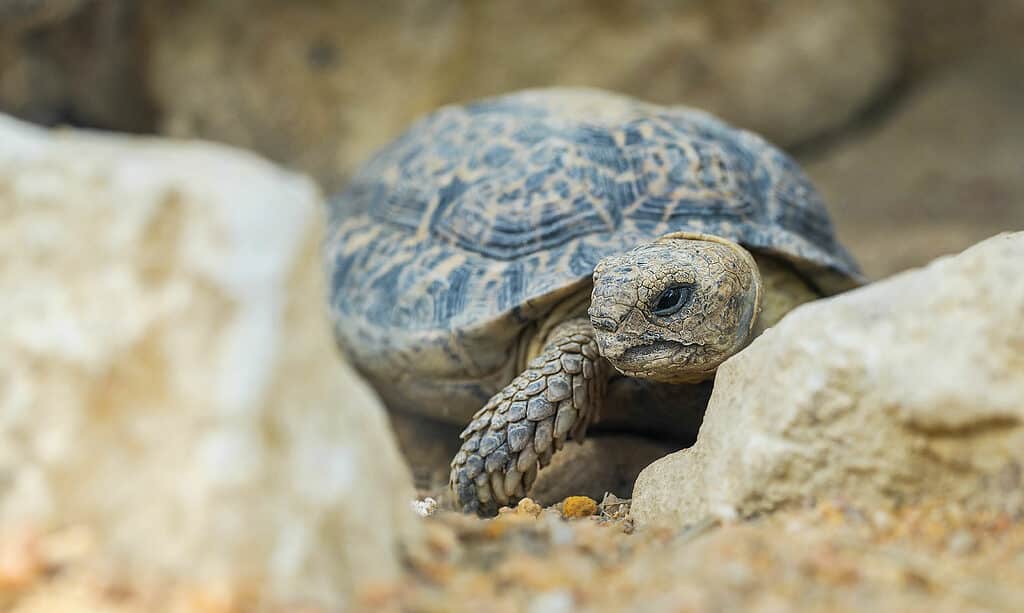
Speckled tortoises are the world’s smallest tortoise species.
©jindrich_pavelka/Shutterstock.com
The photo featured at the top of this post is © chrisbrignell/Shutterstock.com
Thank you for reading! Have some feedback for us? Contact the AZ Animals editorial team.





